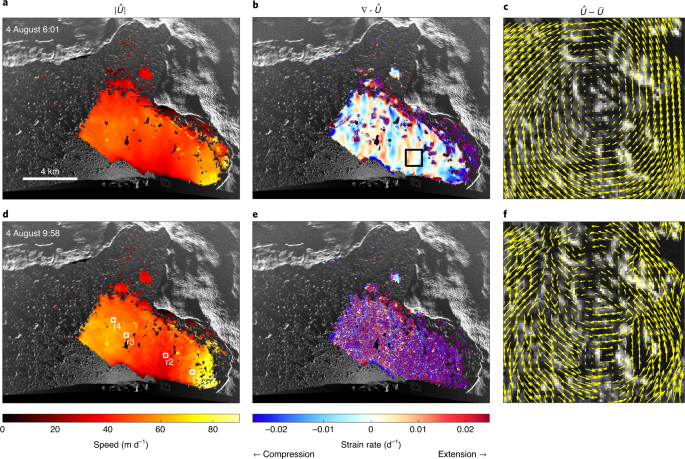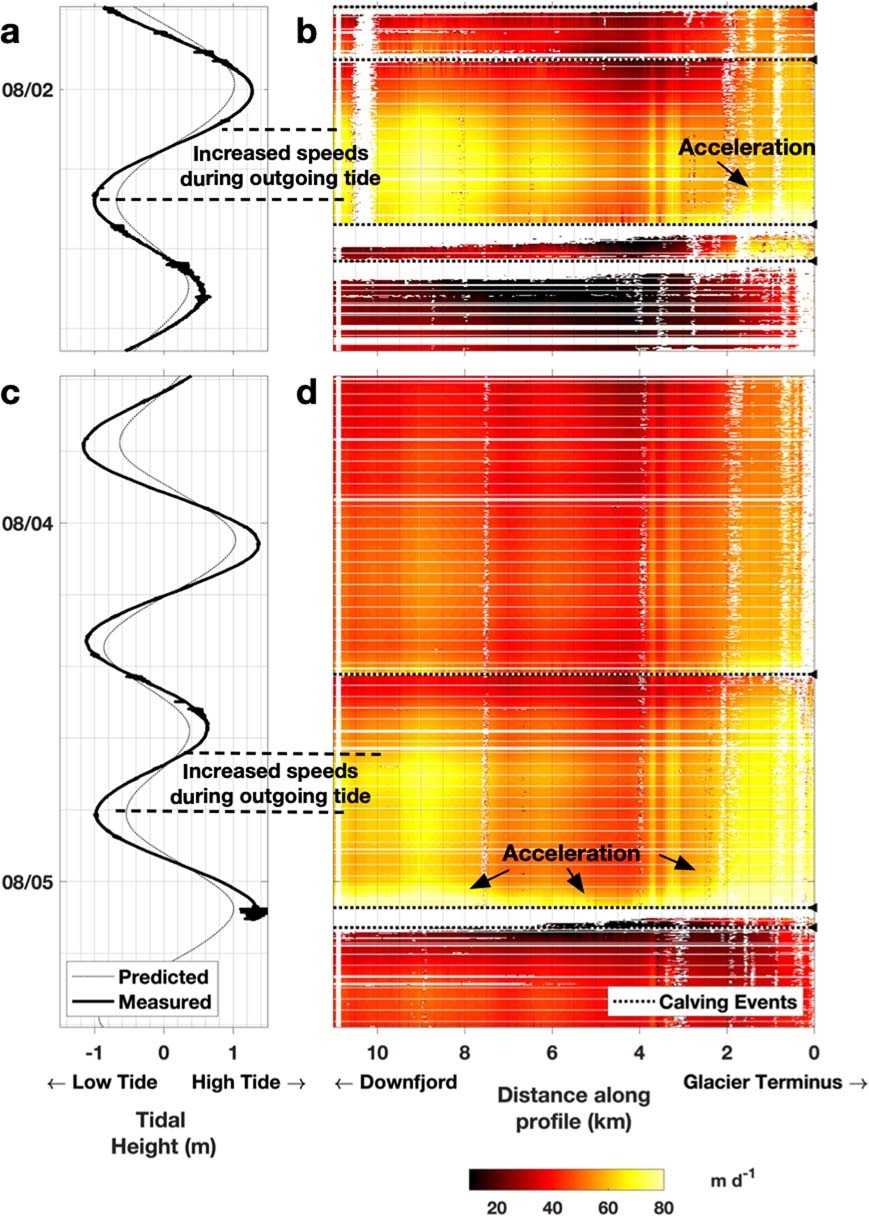Slushy Iceberg Aggregates Control Calving Timing on Greenland's Jakobshavn Isbræhttps://phys.org/news/2021-05-slushy-iceberg-aggregates-calving-greenland.html
Shortly before Jakobshavn Isbræ, a tidewater glacier in Greenland, calves massive chunks of ice into the ocean, there's a sudden change in the slushy collection of icebergs floating along the glacier's terminus, according to a new paper led by the Cooperative Institute for Research in Environmental Sciences (CIRES) at CU Boulder. The work, published in
Nature Geoscience, shows that a relaxation in the thick aggregate of icebergs floating at the glacier-ocean boundary occurs up to an hour before calving events. This finding may help scientists better understand future sea-level rise scenarios and could also help them predict when major episodes of calving are about to occur.
In winter months, icebergs and sea ice accumulate within the fjord in front of Jakobshavn Isbræ, forming a frozen plug that prevents calving. The glacier can continue to flow into the fjord, intact, and advance dozens of meters each day. This accumulation of icy material, which scientists refer to as ice mélange, persists into the summer, but its shelf-like structure loses rigidity in the relative warmth, and it behaves more like individual icebergs jammed together in the fjord. Until now, no study has shown whether this type of late summer ice mélange can influence iceberg calving.
... To understand what was happening during these calving events, Cassotto and his colleagues took ground-based radar interferometers to Greenland in 2012 and set them up in Jakobshavn Isbræ's proglacial fjord to record iceberg interactions every three minutes. They found that in between calving events, icebergs within the ice mélange moved together, flowing down the fjord as a single, cohesive unit.
But the movement of individual icebergs changed just before each of the 14 calving events that they observed—instead of flowing as a single, coherent unit, the ice mélange relaxed and icebergs began to move independently of each other.
"When the ice mélange relaxes, individual icebergs begin to rotate around, and when they begin to rotate around, the mélange loses its structure," said Cassotto. "And when it loses its structure, it loses its ability to impede calving."The exact cause of such shifts is not yet clear, but changes in ocean tides, the subglacial discharge of meltwater, and winds may help explain the sudden relaxation of the thick aggregate of icebergs pushing back against the glacier.
Granular decoherence precedes ice mélange failure and glacier calving at Jakobshavn Isbræ,
Nature Geoscience (2021)
https://www.nature.com/articles/s41561-021-00754-9https://nsidc.org/data/NSIDC-0765/versions/1https://www.nature.com/articles/s41561-021-00754-9/figures/5 https://www.nature.com/articles/s41561-021-00754-9/figures/6
https://www.nature.com/articles/s41561-021-00754-9/figures/6 --------------------------------------------
probably applicable to Antarctica also
